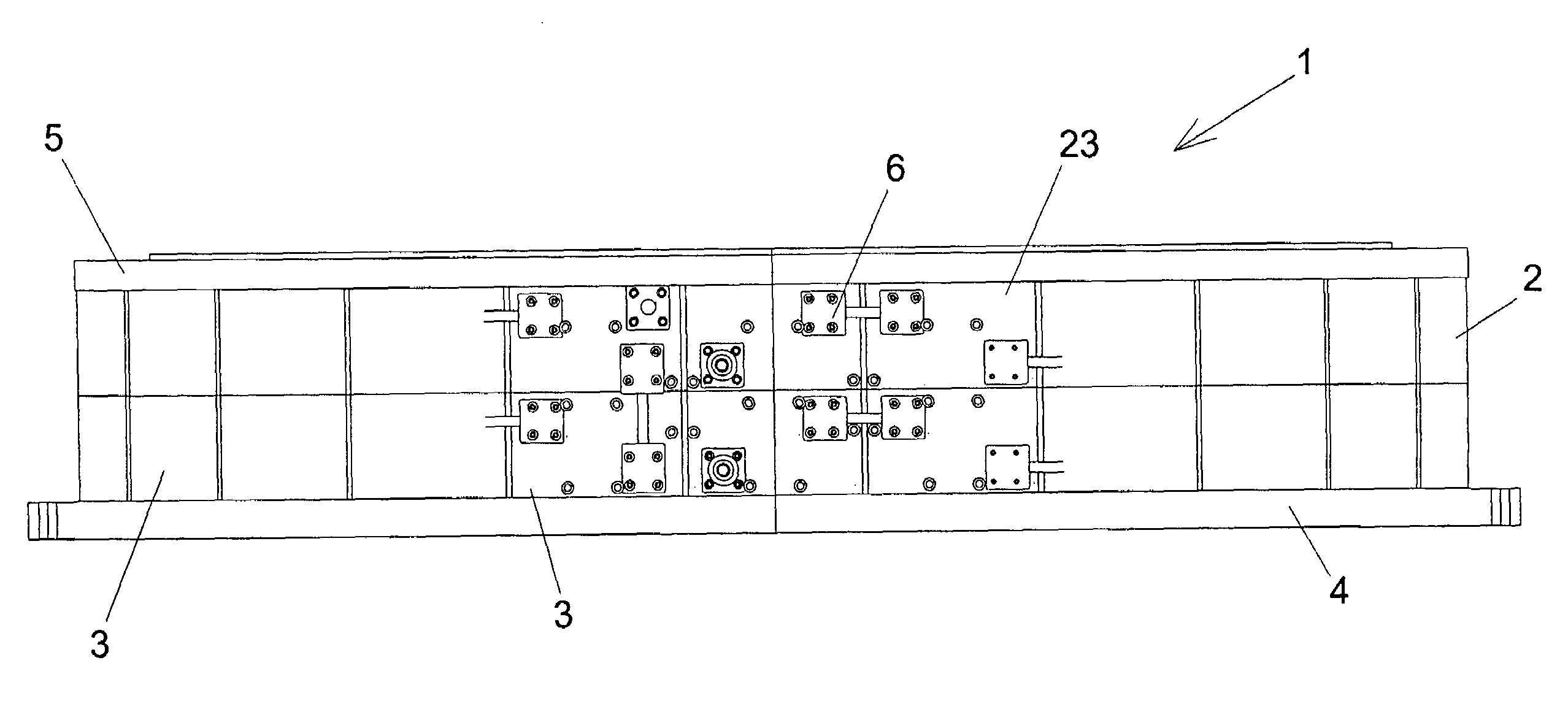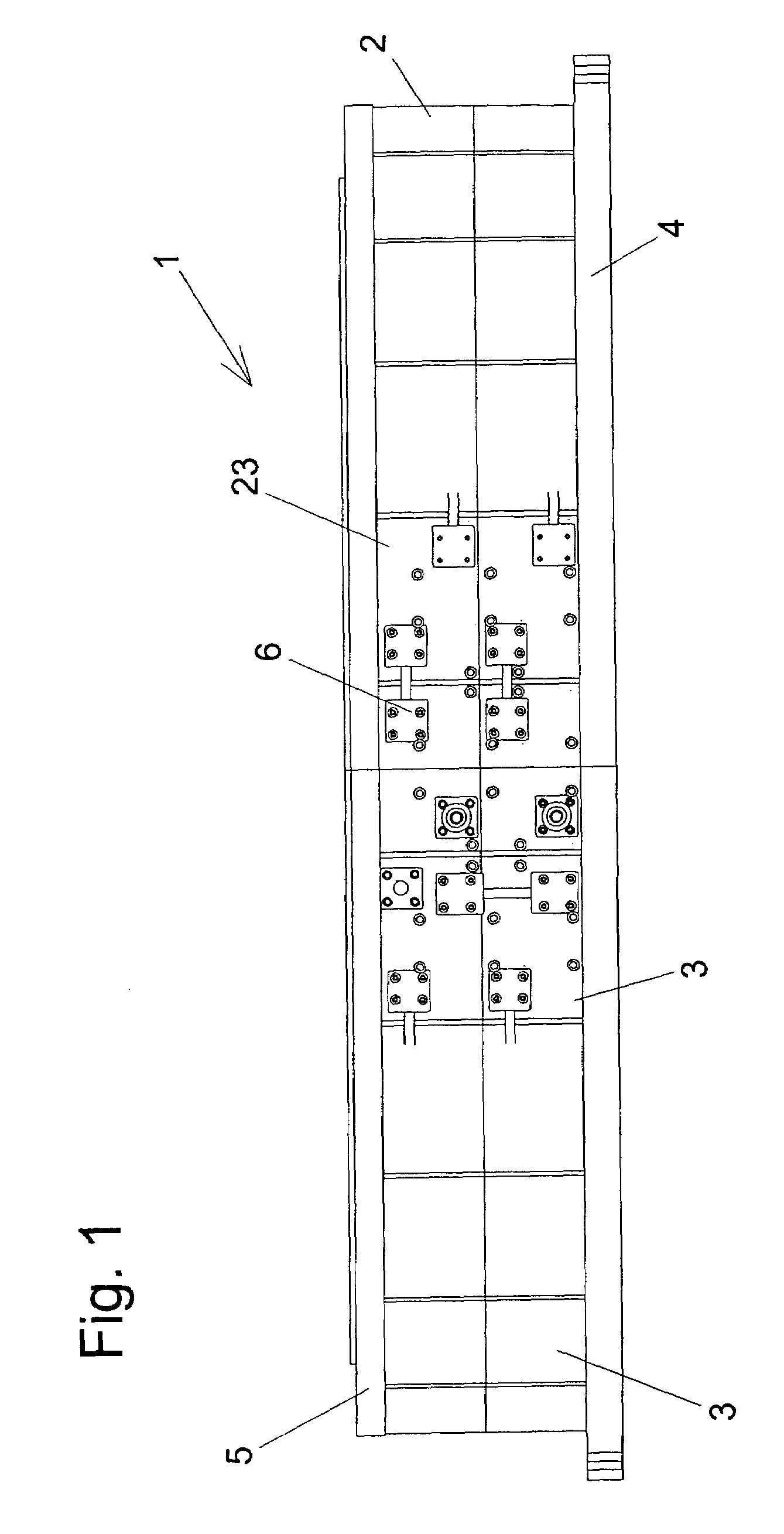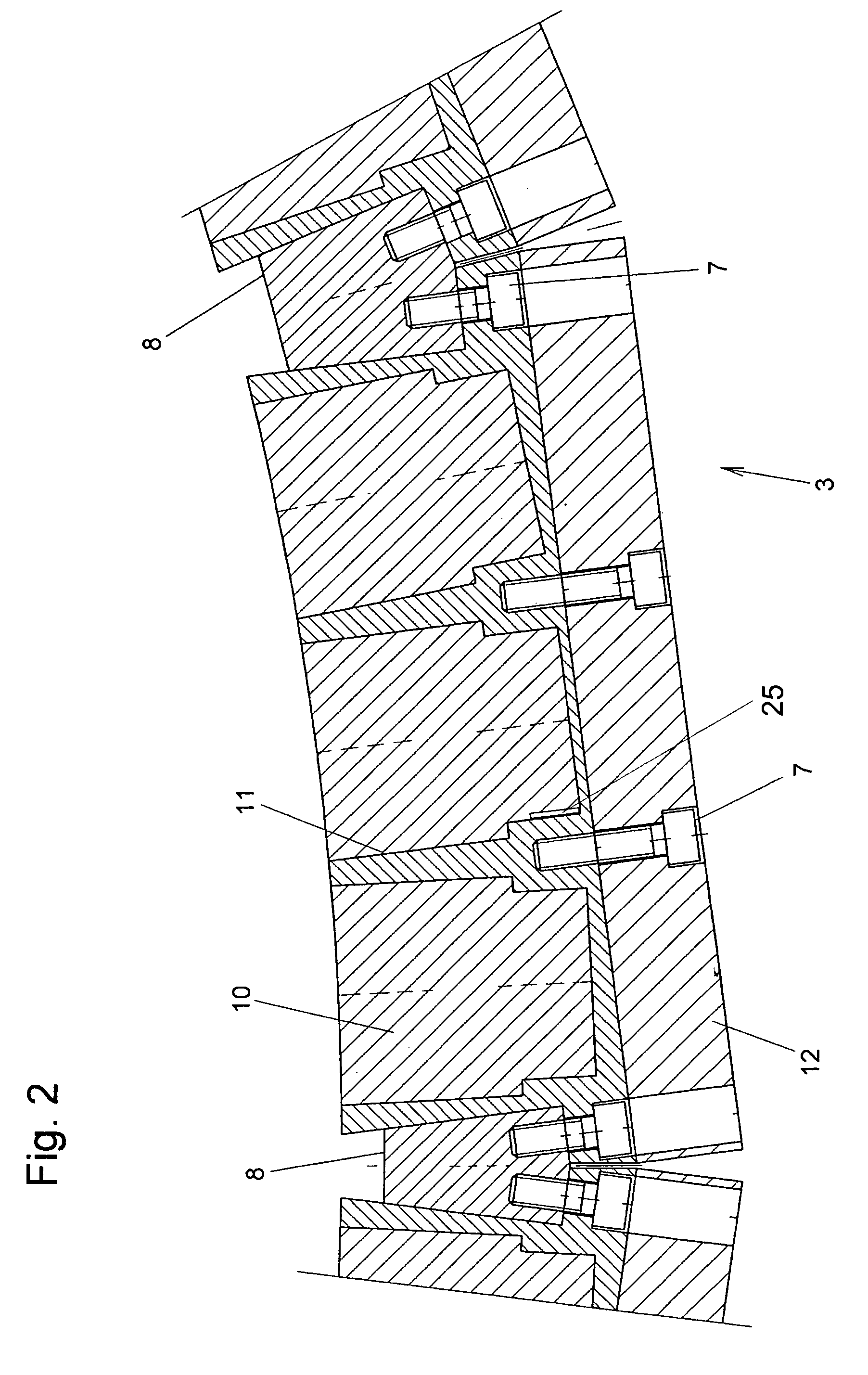Torque motor having a segment design
a technology of torque motor and segment design, which is applied in the direction of dynamo-electric machines, electrical devices, magnetic circuits, etc., can solve the problems of short circuit, damage to the electrical winding of the motor, and significant impact on production costs
- Summary
- Abstract
- Description
- Claims
- Application Information
AI Technical Summary
Benefits of technology
Problems solved by technology
Method used
Image
Examples
Embodiment Construction
[0023]FIG. 1 shows a side view of a torque motor 1 in accordance with the invention. The illustrated embodiment is a synchronous motor with an external annular stator 2. The stator 2 consists of several stator segments 3, of which only the middle three are shown in detail in the drawing for the sake of simplicity. In the illustrated embodiment, the stator segments 3 are arranged in a row and are installed on the entire circumference of the stator. In a modified embodiment, it would be possible, for example, to leave out every other stator segment or to use even fewer stator segments than that.
[0024]A lower stator ring 4, on which the individual stator segments are set, forms the lower termination of the stator. The stator segments are covered at their upper end by an upper stator ring 5. In the embodiment illustrated in FIG. 1, the stator rings 4, 5 are used for mounting the stator segments and for increasing the stability of the stator as a whole. In other embodiments, one or both ...
PUM
 Login to View More
Login to View More Abstract
Description
Claims
Application Information
 Login to View More
Login to View More - R&D
- Intellectual Property
- Life Sciences
- Materials
- Tech Scout
- Unparalleled Data Quality
- Higher Quality Content
- 60% Fewer Hallucinations
Browse by: Latest US Patents, China's latest patents, Technical Efficacy Thesaurus, Application Domain, Technology Topic, Popular Technical Reports.
© 2025 PatSnap. All rights reserved.Legal|Privacy policy|Modern Slavery Act Transparency Statement|Sitemap|About US| Contact US: help@patsnap.com



